First introduced in 1959 -- its name commemorating a land-speed record run at the Bonneville Salt Flats -- the Triumph Bonneville has become an icon of the motorcycle world.
All Matching Numbers:
1966 Triumph Bonneville
T120R Hot Rod!
Please wait a few moments while our high-resolution photos load.
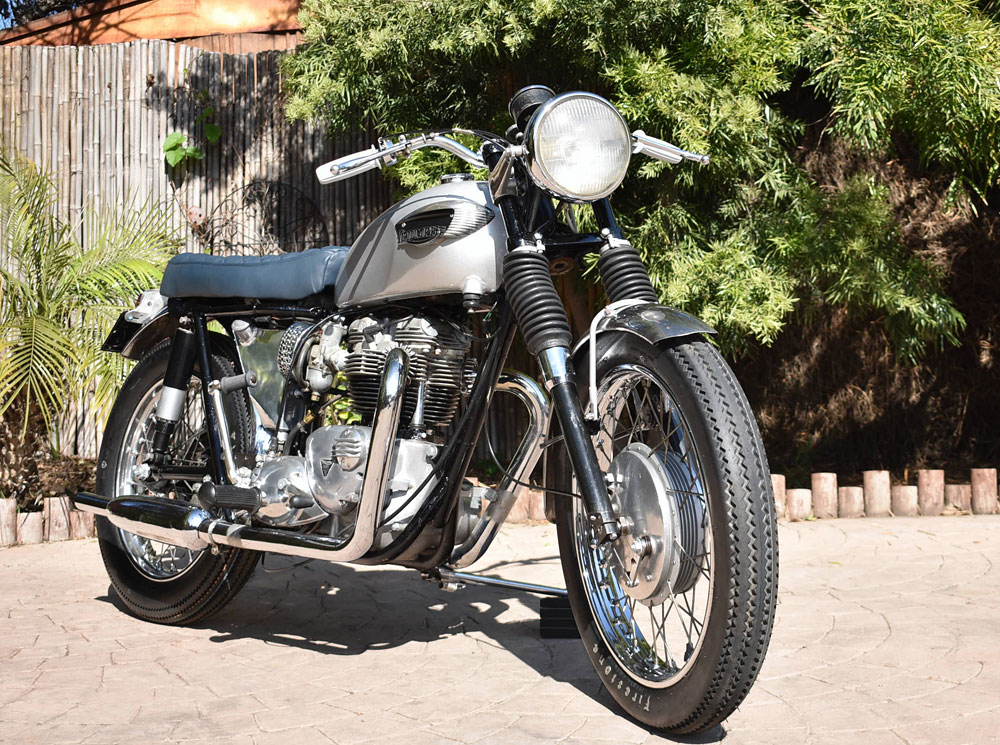
Mouse Over the Photos to Enlarge.
Steve Mc Queen owned, rode, and raced many T120R Bonnevilles, and ever since many of the rich and famous have opted for a Bonneville as their motorcycle of choice. The original bike's design is so timeless, so quintessential, so incredibly beautiful, that the Bonneville was resurrected in 2001 and is still in production to this day. Style never gets old.

When it comes to a classic Bonneville, it's hard to outdo a '66 T120R. The engine got an all new, 2-1/2 lbs lighter crankshaft, a new 1-1/8" shouldered roller main bearing, new "Red Spot" double valve springs, and the previous high-performance cams as standard equipment. Additional oil holes were drilled, and the compression ratio was raised to 9:1, which, combined with the larger 1-3/16" Amal Monobloc carburetors, resulted in one peppy engine.
1966 also marked the beginning of the process of replacing all the old British Standard (Whitworth) nuts & bolts with Unified (American) threads. Yay!

My '66 Triumph Bonneville R120R is quite special in that it features many custom touches. I bought it 2-1/2 years ago from a Triumph enthusiast and collector who started to downsize due to old age and retirement.
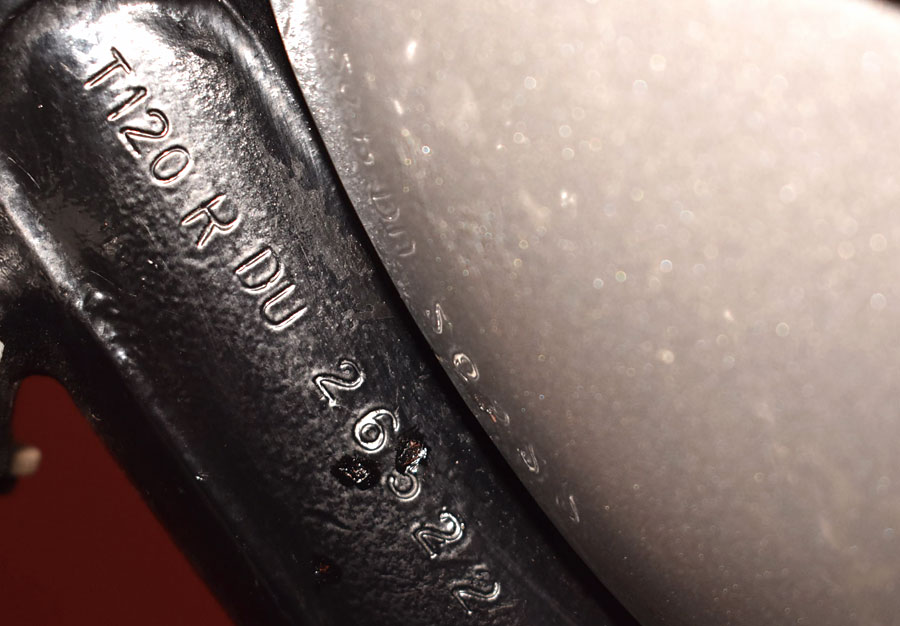

The bike is 100% matching numbers.
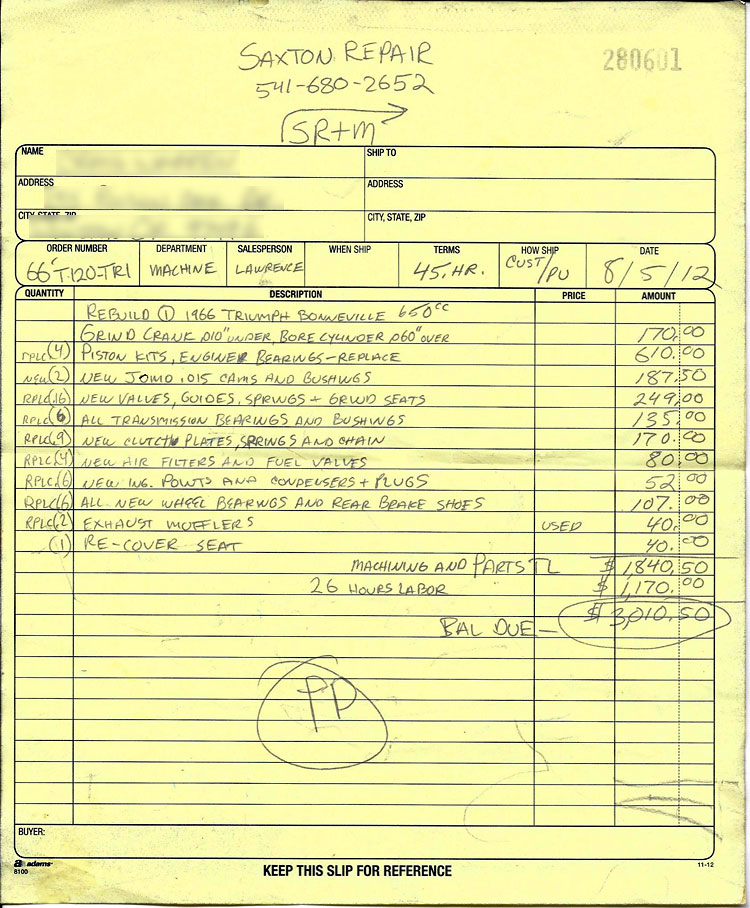
The previous owner spent $3,010.50 on an engine and transmission rebuilt, a new clutch, new chain, and new wheel bearings, among other things.
Since the bike came with a no-battery magneto ignition and was difficult to start, I had British Triumph gury Tom Robinson from BBC Triumph in Ventura convert the system and install a new battery, hidden under the seat, all of which cost me roughly another $1,000.00.

Just recently I splurged on a set of "gum-dipped" 4-ply Firestones, arguably the finest vintage tires money can buy. They are correctly sized 3.25-19 in front and 4.00-18 out back. Combined with new rim bands, tubes, and installation, this set me back $431.00.
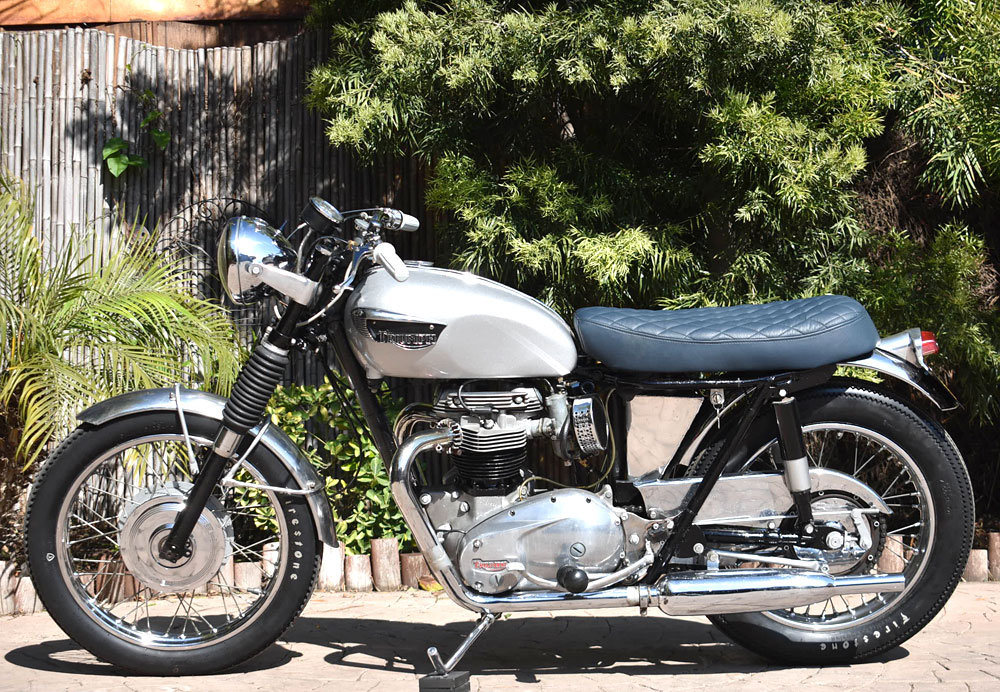
Looking at this bike as it presents itself today, it's hard to believe that it is, in fact, 50 years -- half a century old -- already.

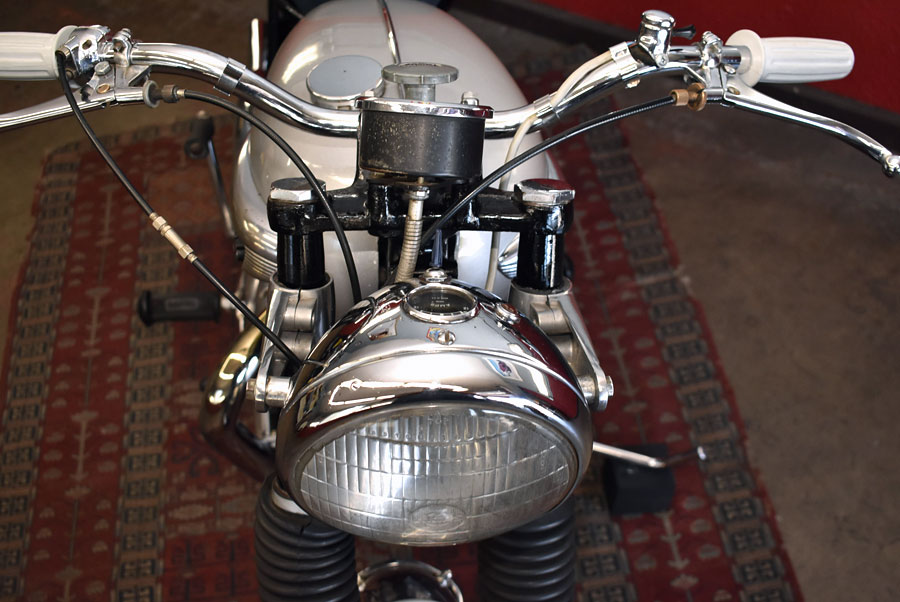
Cockpit features the chromed headlight that houses the Lucas ammeter, light switch, and control light. Instrumentation is very basic with large 120mph speedometer. Chrome finishes are everywhere, and please note the cool brass fittings and correct gray Amal handlebar grips.
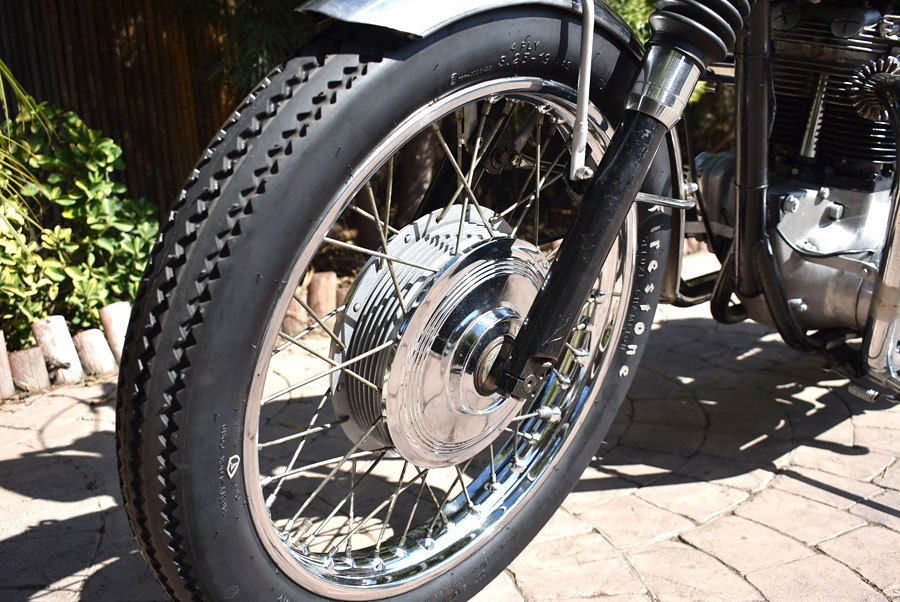

The bike has the original, cable operated drum brakes on both corners. Simplicity in its purest form.

Side stand, chain guard, air cleaners, and megaphone mufflers feature beautiful chrome finishes.

I had the seat redone in genuine and quite sumptuous Mercedes-Benz leather, which cost me another $310.00.

Rear lighting is provided by a genuine Bates #8101 taillight from the 1960s.
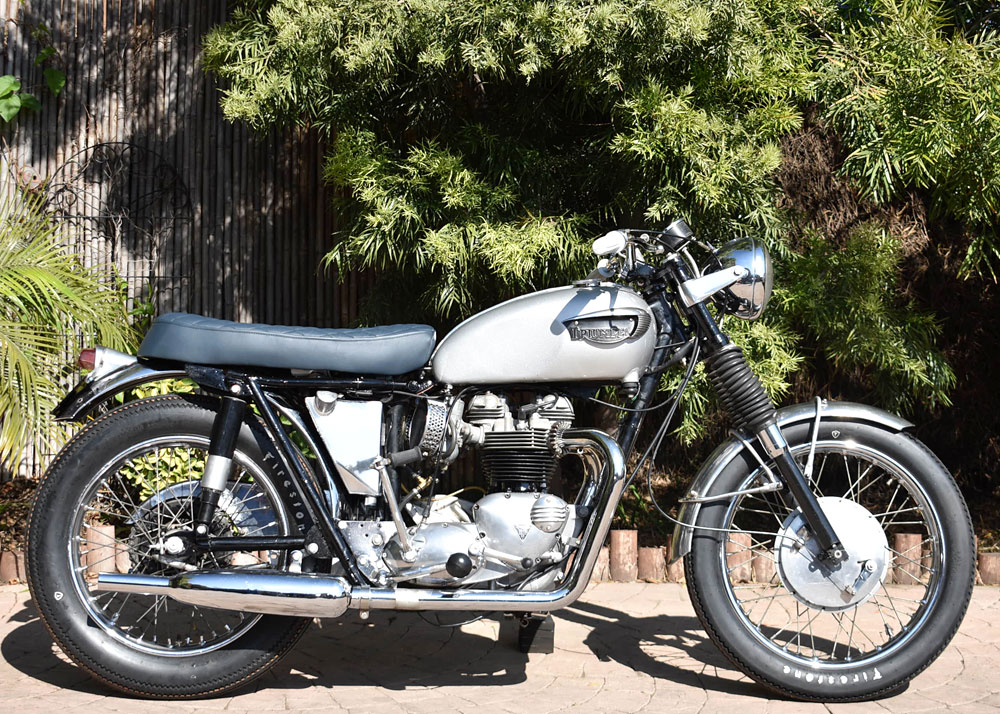
Let's check out the right side now.
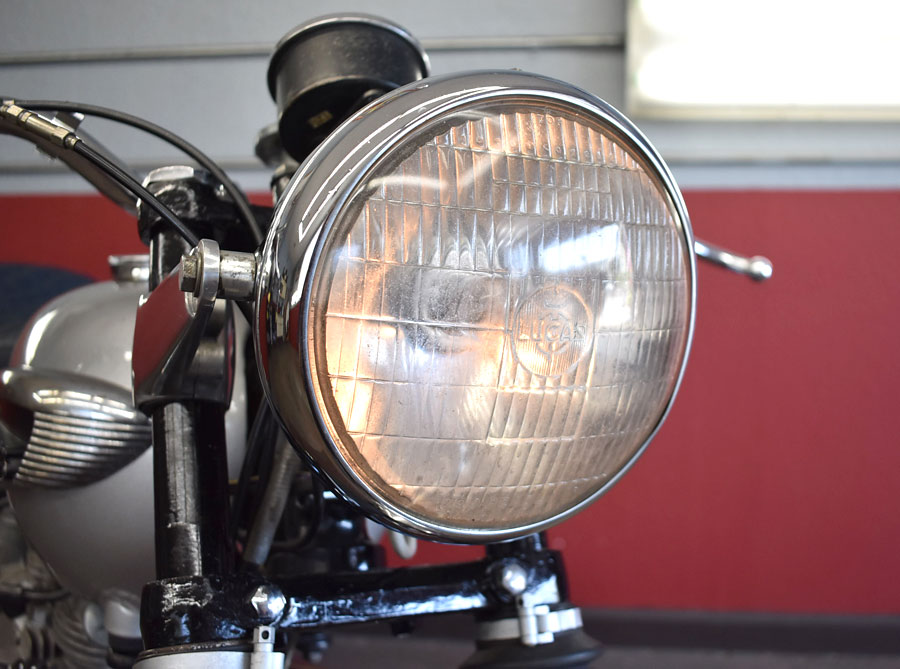
Original Lucas headlight contains 2 bulbs: a 2W parking/city light, and a 48/48W low-high beam driving light.

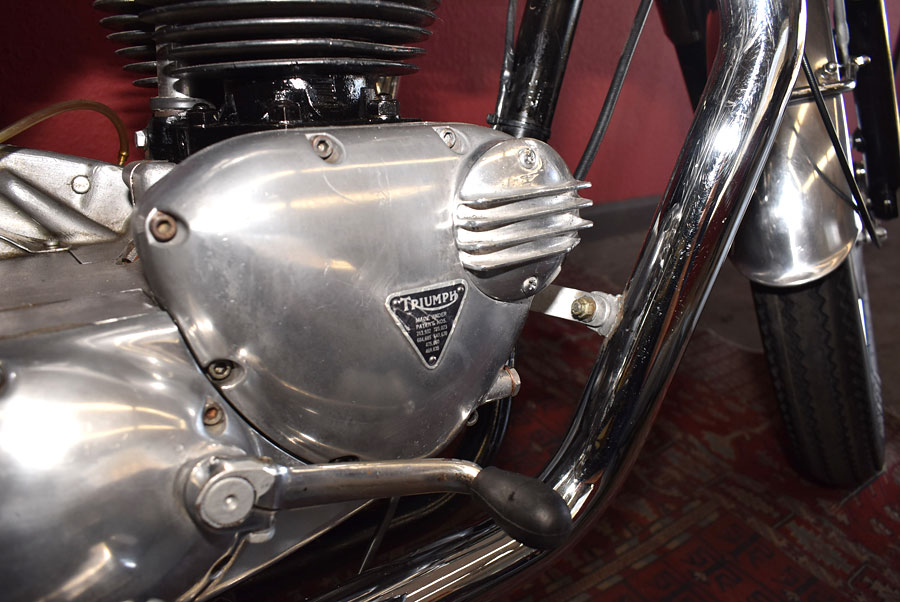
Clean engine without any broken fins. Polished engine cases with finned inspection cover.
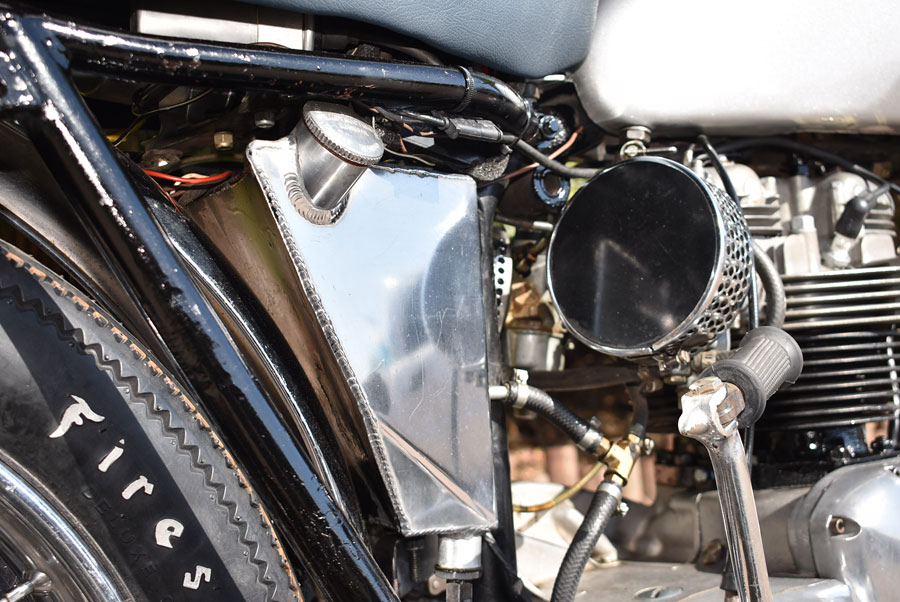
Super-expensive custom alloy oil tank and custom air cleaner housings.

Hagerty, which is very realistic in its assessment of values, lists the current value of a 1966 Bonneville as follows:
- #1 condition: $20,000
- #2 condition: $16,000
- #3 condition: $12,000
- #4 condition: $ 8,100
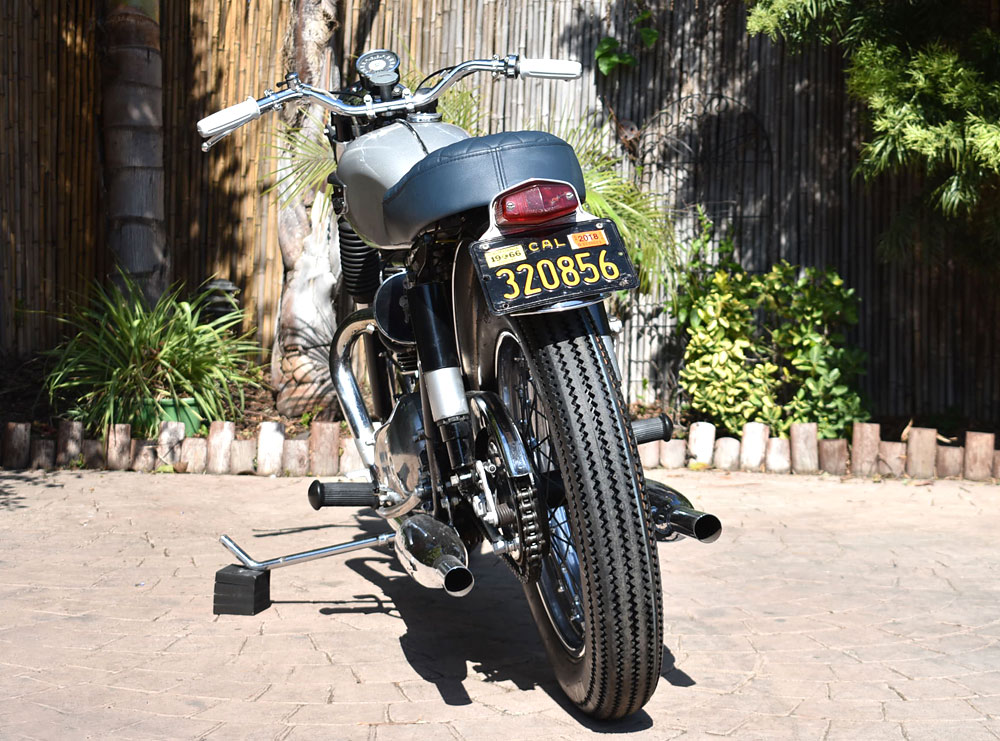
I value the condition of this 50 year-old bike as a #3+, beautiful enough to get compliments, but not so pristine that I'd be afraid to ride it.